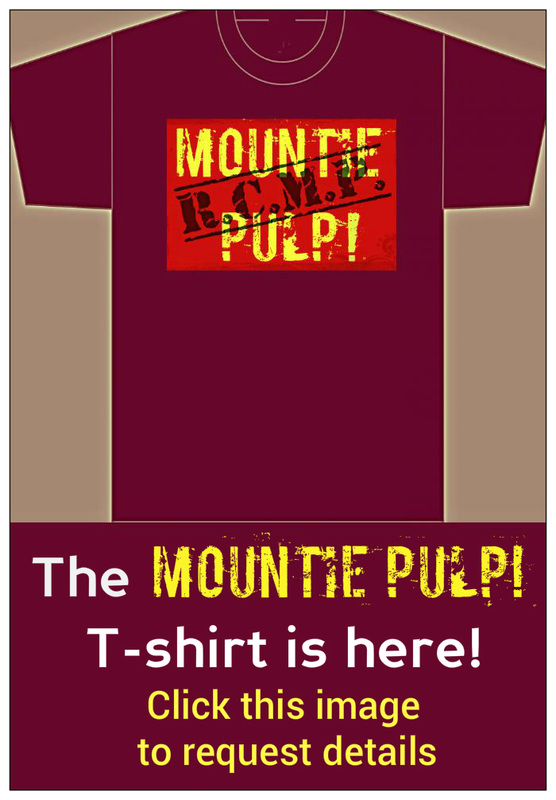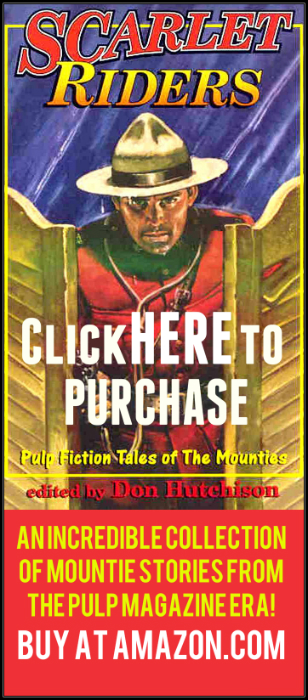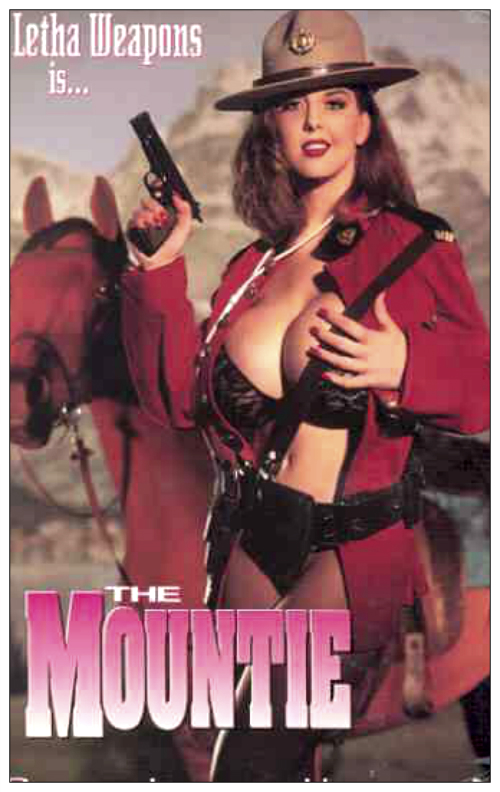Click on the image to enlarge!
|
Not much needs to be said about this post, except for that when I find a fun Mountie image, I'm sometimes compelled to have some fun with it! The images that Marilyn took with this (thus far) unnamed Mountie at Lake Louise in Banff, Canada in 1953 (while filming "The River of No Return") are really charismatic stuff!
Click on the image to enlarge!
0 Comments
This is a compilation of two images from Zane Grey's King of the Royal Mounted comic book (the covers of which I posted HERE), tagged together and cleaned up into a single cool image! Of course, I'm a fan of Mountie stuff, and this was just plain fun. As my Canadian pals at the film blogs Silver Screenings and Speakeasy pointed out, the word "Moulage" described here is one worth learning! One learns quite a bit hanging out with Mountie culture, wot? Feel free to download the image below, and to learn about Moulage HERE. Here's a download of the full file, about 2MB. Great for a poster!
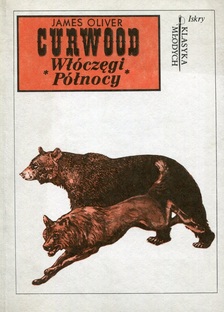 This is the first silent film Mountie review on Phantom Empires, I'm pleased to report. There are apparently quite a number of these, but sadly, most of the Mountie-themed silents are now lost. Such a crime. When I think of how many silent films are lost in general, it creates a hard knot in my guts that lasts for days. The greatest artistic loss in modern history, in my opinion. I'm profusely glad, and extremely grateful for the silents that survive for us all to enjoy and learn from. NOMADS OF THE NORTH is a 1920 adaptation, produced and with a script written by the man himself, of James Oliver Curwood's fan-tastic novel of the same name. For them that are unaware, Curwood is to the Mountie novel what Raymond Chandler and Dashiell Hammett are to the Private Eye tale; his stories evoke the frozen north quite as well as anything that Jack London ever put to paper, but without the accompanying fame. Tragic. Philip Steele of the Royal Northwest Mounted Police, Flaming Forest, Honor of the Big Snows, & Valley of the Silent Men are some of his other excellent Mountie titles. I particularly enjoy the first on that list. Full of adventure and action, which is what we all enjoy, wot? This is a wonderful film, and a clean, decent adaptation of the novel (with minor omissions and changes). It deals with a commercial town in the wild north called Fort O'God (yep, O'God), run by the stern Duncan McDougall, the factor of the Hudson's Bay Company..."a tiger of the old regime, still ruling his primitive domain with a hand of iron and a heart of stone". McDougall's son, the slimy Bucky McDougall, "A serpent polished with the veneer of years spent in Montreal, the deadliest and most treacherous of all the McDougal race", is in love with the lovely local flower Nanette Roland (played by Betty Blythe), who is unavailable, waiting for her lover, Raoul Challoner (played by the miraculous Lon Chaney) to return from the wild...but is a year overdue. With a little unethical convincing, though, Nanette is convinced to marry Bucky, and in a moment of ironic chance, the long-gone Raoul makes his appearance at the wedding. Bucky is outraged, fearing the loss of his long-awaited prize, and in the ensuing fight, his seedy underling Marat is mistakenly killed by Raoul, which sends him on the run. It becomes the duty of the stalwart Corporal Michael O'Connor of the R.N.W.M. Police (played by Lewis S. Stone, who is most well known to me as Judge Hardy in the Andy Hardy films) to hunt Raoul down and to bring him to judgement! This was an amazingly pleasant adventure. The acting really opened up that wonderful feeling of narrative space common to most of the best silents, and even between the inter-titles the story stayed even and fresh. The story was clear from beginning to end, which isn't always certain from silents from this early date. James Oliver Curwood's involvement was, I'm sure, the reason for this; a master of a strong streamlined plot. Typical of early silents, it had that wonderfully stagey melodramatic flair (which always reminds me of THE PERILS OF PAULINE, for some reason), with all those (sometimes amusingly) unambiguous and simple facial expressions that make the emotions of each character quite certain. I recommend this for silent film fans. Though it might not be the best to begin your silent film journey with this one, it's good enough that you'll still enjoy it with no background in the silent art. The Mountie content is plentiful, too. Lewis S. Stone really projects all the fairness and devotion that one has come to expect from the classic Mountie myth. KING OF THE ROYAL MOUNTED was many things in it's life; a comic strip, several cliffhanger serials (which I have, and will be reviewing here eventually), and a number of "Big Little Books". The character, the stalwart Mountie Dave King, is the creation of Stephen Slesinger (not Zane Grey), who is also the creator of the mega-popular western character RED RYDER. I present here some of the covers for the series, all with colourful and interesting variety.
Here are some web-found images of one of my fave cowboy actors, Tim McCoy, in a Mountie role, from the 1935 picture FIGHTING SHADOWS. I don't have this in the prodigious Mountie DVD collection yet (I have yet to find a copy for sale), but I thought these great on-set images were pretty spectacular and worth posting. Unlike some of the cowboy stars of his era, McCoy had real cowboy credentials, having left his education behind to work as a ranch hand in Wyoming, learning all the appropriate skills, plus becoming conversant in the local Indian languages. This is the only Mountie movie of his that I know of, and info is relatively scarce. When I find a copy, I'll review it here. If you've seen it, let me know!
Here are some goodies by Greg Ruhl, Chris Caldwell, and Tom McNeely. Ruhl's Mountie seems to be blessed in his choice of a lady; I assume that this is the cover of a romance novel...I think his page lists it as such (new: I got confirmation from the man himself; it was a cover for a Harlequin romance). Chris Caldwell's "Hero in Serge" is a spunky take on our image of the Mountie, and illustrator Tom McNeely magnificently brings out their legend in just a few colours and swishes of a pen. Leif Peng, an art educator in Ontario, and good friend of McNeely, had this interesting thing to say about two of these fun artists: "Greg Ruhl shared a studio space with Tom McNeely (and several others) for a few years in the 1990s. I actually took over that space when Greg moved out." Small world, wot? Thanks to Leif for the comments and support. This batch is really fun; I dug around for some more illustrator-type goodies this time around. Please follow the links below to find more about these artists.
 Relatively hot on the tail of the shockingly fantastic 1953 James Craig 'North-Western' FORT VENGEANCE (got from the Warner Archive), I wanted to both see and review another of his Mountie movies, NORTHWEST RANGERS (one of the many not in my already sizable collection). No luck. I looked for it wildly, even with some of the grey market bootleggers on line, but I couldn't find it. It was a tad depressing. So, having heard a fellow film scribbler's call of distress, fab fellow movie bloggist and all-around interesting gal-type lady Kristina Dijan, who is one of the stalwarts responsible for this very blogathon, came to my rescue. Having received it in the mail, I watched it quite pronto-ish. What a fantastic picture. The plot is a fusion of a few different themes, one particularly Mountie oriented, and a couple familiar from many a lovely classic western...in this case I'm thinking back to the spotless and inarguably wonderful 1954 Audie Murphy western, DESTRY. It begins with two young boys, Frank "Blackie" Marshall, and James "Jim" Gardiner; good pals across the board (like brothers, in their own words), but in nature and temperament entirely different. Blackie is the wild one. The defiant one. Jim is calm and measured. It begins with an arrow embedded into a tree, transfixing a notice about illegal whiskey. There are many empty liquor bottles on the ground...the boys suspect them to have been left by a group of "drunken Indians" (which is, in spite of a bit of soft racism here, a very real and tragic problem, even to this day). A very short time later they find this to be a prophetic observation; when they arrive at their homestead, they see that those same Indians have raided the houses, have killed their parents, and have set things ablaze. Their lives will never be the same. They are taken in by a kind Mountie Sergeant named Duncan Frazier (played with a calmly paternal grace by Jack Holt, star of one of my favourite serials, HOLT OF THE SECRET SERVICE). Skip ahead to adulthood, and Blackie (played charismatically by James Craig) and Jim (given a cheerfully confident vibe by William Lundigan) have followed their natural inclinations in very likely fashion. Blackie has become a bit of a dapper cardsharp with an eye for the ladies and the main chance, and Jim has become the very pride of the Royal Canadian Mounted police (at that time called the Northwest Mounted Police). As adults in a very real world, those natures are set to collide, and they do...in spectacular fashion. Toss in the luminescent Patricia Dane as sparky and intelligent love triangle fodder, with John Carradine as an evil-yet-charming owner of a gambler's saloon, and a great spot for Keenan Wynn for good measure, and you have the stuff that makes for a supremely fulfilling movie watching session! NORTHWEST RANGERS, as you may guess, is a rollickin' good time, and in that spirit I highly recommend it. As I mentioned, James Craig, who I've reviewed previously in FORT VENGEANCE (HERE), is really one of my 'watch pocket' actors these days; guys that aren't really famous but should be, that I keep in a special little category of personal favourites. Although it's really Craig's movie, William Lundigan is also quite good, and he brings across the feeling of those Mountie ideals that I admire so much. The direction, typically tight in true Mountie picture fashion, is well done by Joe Newman, director of the amazing 1952 Tyrone Power Mountie film PONY SOLDIER and THE BRUTAL 1958 Joel McCrea western FORT MASSACRE, and the script is the same, written by Gordon Kahn and David Lang, from a story by Arthur Caesar. This is about as good a film that one could pick for a Canada Blogathon, as it makes me want to go north and breathe the fresh air and hike a mountain! I'd like to again thank Kristina Dijan of SPEAKEASY for the opportunity to see this great Mountie film. This is a part of the 2016 O' CANADA blogathon, put on by SPEAKEASY and SILVER SCREENINGS! I'm happy to have the opportunity to join in on the fun once again. Please go visit their pages HERE and HERE to give love to Canadian and Canadian-themed movies! 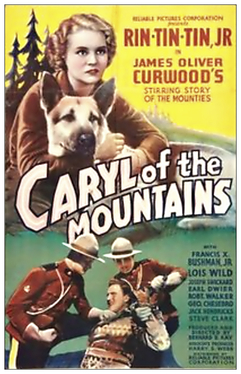 When I was a kid, forty-or-so years ago, Rin-Tin-Tin was a name that popped up in my universe quite a bit. Along with the likes of Howdy Doody, Lassie and Dick Tracy, that name seemed to represent something with some sort of kindred connection with me, though he was clouded by the distant mists of what children call "the olden days". I knew that Rinty (as he was sometimes known) was a dog, I knew that he was brave, but other than that, he was a complete mystery. Jump forward thirty years. As the DVD revolution began, I started having access to so much great stuff. I gorged (am gorging) on all those things that pre-internet living had deprived us middle-modern generations of; serials, b-reel movies, radio shows, and other such delights. Now, even in my own collection, I find it difficult to catch up. I sometimes even have a fear of "passing on" before I see the choicest bits! A good position to be in, to be sure. It was in this atmosphere that I started to see Rinty films, and even a serial (THE LIGHTNING WARRIOR is, as the kids say, amazing). I pat my inner child on the head fondly as I watch them, knowing that I'm resolving deeply held wants developed when I was quite wee. A few years ago, on yet another Mountie movie tear, I found the perfectly charming sixty-minute b-reel CARYL OF THE MOUNTAINS, from 1936. It was a perfect storm, from a Phantom Empires perspective! Mounties and Rin-Tin-Tin? Hot dog! Better than a million dollars, Mr. Potter! I nabbed it, and home I went, thinking that I'd pop it on my telly, kick back with a Coke and a snack, and enjoy. Well, I didn't. I got back to my place and put it on my DVD shelf...you know the one with sixty-six Mountie movies on it? Yep, that's the one. I had panicked in an irrational way; something about 'if I watch the only Rinty movie with Mounties, there may be no more!". So dumb. Well, long story short, I did watch it, and I loved it. Of course, I love Mountie stuff to begin with (one of my many cinematic, audio and literary paraphilias), and I'm also predisposed to love Rin-Tin-Tin stuff, but this really was especially enjoyable. Apparently based on a story by James Oliver Curwood (the godfather of Mountie fiction), CARYL OF THE MOUNTAINS is a nice little romp through territory warmly familiar to fans of b-reel pictures. Produced and directed by Bernard B. Ray (who did so for a huge number of other Rinty features and serials), it stars the luverly Lois Wilde as the titular Caryl (who I know from the excellent Kermit Maynard Mountie movie WILDCAT TROOPER ALSO FROM 1936, as well as the Ray "Crash" Corrigan classic, UNDERSEA KINGDOM), and our rugged central Mountie figure is well-played by the uniquely-named Francis X. Bushman Jr.. The canine hero here is not the original Rinty (if there ever was a single Rin-Tin-Tin...I'll have to research that), but Rin-Tin-Tin Junior, as himself. Caryl Foray works at an investment firm, and as we start the picture, she's pocketing a large envelope. She sneaks out of the office, goes to the street, and mails it...but not before her boss, Enos Colvin (yes, Enos) sees her do it. He goes to the pad on the desk, and using a mirror, manages to read the address that she wrote on the envelope. Jump ahead to Canada, where Caryl's French Canadian uncle (and owner of Rinty Jr.) receives the letter, with a wad of securities inside and a note telling him to keep them safe. That seals his fate. Caryl's employer makes his way up to uncle's cabin, and in a struggle over the location of the securities, shoots the uncle dead. He then shoots Rinty Jr., and leaves the cabin without the papers. Enter Caryl's fiance', Sergeant Brad Sheridan, a big lug of a Mountie played by the cheerful-but-serious Bushman. She's in quite a fix. Without the proof of the securities (which are hidden in uncle's shack), Caryl is on the hook for the crime. She takes off before duty forces Brad to bring her in, which makes her a fugitive...and in spite of the saying that the Mounties "always get their man", it certainly applies to women, too! It was great fun all around. Rin-Tin-Tin Jr. is a well trained critter and full of eagerness, and they really manage to pull off some really nice action for him. Francis X. Bushman Jr. is a touch more big and lunk-ish than the usual film Mountie, which I thought was a pleasant change, especially standing next to the relatively tiny and mobile Lois Wilde. I enjoyed his performance a lot. Another thing that I liked was how dark the storyline was; the uncle dies, the dog gets shot, the gal is threatened by prison, etc....the fun of it didn't stand in the way of some good hardcore plot stuff. They packed quite a load of good story into a mere sixty-minute film, but it didn't seem rushed, and none of the plot points were shorted in any way. It was a brisk little Mountie tale! This picture exemplifies everything that I love about these movies. It's packed with justice, goodness, excitement and fun. These qualities are often, in this jaded, post-modernist world, looked on as archaic, or at best, quaint, but to me they uplift my insides and make me feel good about life. That's why I like the films of the 1930's, and I believe that's why the 1930's liked the Mountie genre. Rinty is pretty damn cool too! I've been digging on making these 'memes' lately; I thought the Mounties needed a few of their own, so here's the first!
I love these three paintings! The various states of Mountieness: out of uniform, reminding us that a regular person puts on the scarlet coat, on foot engaging with people face to face, and then on the horse that gives him his title. I enjoy the variety of Mounted police art; it seemingly has such a limited scope, but so much has been done with the idea! These are by Pat Deputat, Ron Embleton, and Frederick Remington, in that order. (click image to enlarge, then use the arrow keys ← → to change images ) You can buy prints of some of these artists at this fine website: MOUNTED POLICE ART  You know what? I just realised that we're missing a few things in our supposedly "cool" modern life, and they are things that I believe we need as a culture. Such as, when was the last time you looked at someone and thought of them as "debonaire"? or "stalwart"? I mean, many people go through life unaware of A) what those words mean, and more importantly, B) what those words stand for. I believe that they stand for good things. Interesting and life-enriching things. Well, there are all sorts of such rapidly-becoming-antiquated words; I can think of a few others off the top of my head: "intrepid", "Dashing", "urbane", and the word that occasioned this ramble: "Charming". I love charming things. Shirley Temple movies, Old Mother West Wind Books, Arthur Conan Doyle's 'Songs of the Road', and 'Five Little Peppers and How They Grew'. Charming! Harvey the darned Rabbit? Charming! Honestly, I believe we need a LOT more 'charming', and a lot less 'cool'. Charming things make one smile, they feel comfortable, they include you in the experience, and they never leave you feeling anything but nice feelings...even when bad things happen. That's exactly how I feel about Dick Powell's 1949 Mountie picture, Mrs. Mike. It's just plain charming.  The dapper (yes, I said it) crooner/tough guy Dick Powell stars as serious-minded, yet light-hearted, Canadian Mountie Sergeant Mike Flannigan, alongside the radiant Evelyn Keyes, who plays the gentle Bostonian Katherine Mary O'Fallon. In a truly old Hollywood-style romance, the two meet at her father's home, and immediately the attraction is there. It isn't a tawdry thing, their interaction, but the kind of nice, yet exciting magnetism that happens between those who are basically normal, good people. It's fun to watch it develop, and the two actors seem to have had a really good time in the process. Soon, the question is popped, and their life together begins. The question is, can a Boston-bred American woman adapt to the rigors of the remote Canadian southwest, when Sergeant Mike returns to his post? That, as they say, is the question...and our story. The script was based on the book Mrs. Mike, The Story of Katherine Mary Flannigan, by the husband/wife team of Benedict and Nancy Freeman, which itself was based on a mere five page distillation of stories that Mrs. Flannigan herself had written. Though apparently much of the original narrative was itself fabricated (according to the real Mounted Police officers who had served with Flannigan), the script manages to capture quite a bit of truth, which is peppered throughout. Normally a revelation of that scale might bother me, but it being classic Hollywood love story, I've come to expect that sort of thing as a pleasant norm. I myself read the book (which is apparently a minor classic for kids, but none that I've ever met), and I found it to be, well, charming. In spite of that charm, it also has some of the brutality of the lives of the people who lived in such isolated, self-sufficient communities. There are a few relatively shocking deaths, and there is some disillusionment, but it still maintains a hopefulness about it. I don't want to give the impression that this is the next Casablanca or The Sound of Music (in fact, I think Powell only manages to sing one song, though a fun one, in the entire picture). It's just a very good movie from every angle. Though it was filmed entirely in California, I got lost in that intangible Canadian feeling that I've enjoyed on my many excursions into that great and beautiful country. I suggest that if you can't actually go up to those resplendent Canadian wilds, Mrs. Mike is...a charming substitute. You can also find TWO radio versions of the story, one with Dick Powell reprising his role in the film, and the other with Joseph Cotten on my Mountie Pulp page, HERE and HERE.
 Ahh, the 1950's. I'm starting to think that that decade earns the western movie crown! The list of great westerns in that decade boggles the mind: High Noon, Shane, Broken Arrow, The Far Country, The Gunfighter, The Naked Spur, Hondo, The Last Wagon...and that's just a few famous ones! Though the late 1930's and early 1940's were the golden age of the mountie film, there were some good examples of the Canadian Mountie story in the 1950's, too. There was Saskatchewan in 1954 (starring Alan Ladd), Pony Soldier in 1952 (with Tyrone Power), and a good number of the Kirby Grant films were released in that decade. Enter the splendid 1953 action epic, Fort Vengeance, starring the rugged James Craig, with Keith Larsen, Reginald Denny, and the oddly-cast-but-lovely Rita Moreno. Craig and Larsen play brothers Dick and Carey Ross, with Craig as the elder (and wiser) of the two. As the picture starts out, they're on the run from a posse, headed for the Canadian border. Larsen's character, Carey, has shot a man in what is ostensibly self-defense, and it's up to the older to get him out of the jam. They do out-distance the sheriff and his men, and they manage to make it to the jurisdictional safety of Canada's lush south. Immediately Carey's impulsive recklessness comes to play, as he shoots one of a pair Indians on the trail...an act which will come back to haunt the brothers. Stuck north of the border and lacking work, Dick decides that he's going to join up with the Northwest Mounted Police, and little brother tags along. Things move quickly from there; Dick dives fully into his new life, taking on his responsibilities with vigour, while Carey chafes at these new restrictions and begins to engage in behaviours that will cause trouble for everyone around him. Then there is a murder.  I was very happy with this film, both as a 50's western, and as a solid depiction of the Canadian Mountie ideal. James Craig was fantastic as a Mountie, dependable and loyal, brave, and always there to do the right thing. In fact, he reminded me of one of my favourite motion picture Mounties, played by Robert Preston in the amazing North West Mounted Police from 1940 (reviewed by me HERE). I'd really like to see more of Craig as an actor in general; both charming and stern when required, and very much the type that you could believe could ride alone into an army of hostiles with not a drop of sweat on his brow. Keith Larsen was very good as the weak-of-character Carey Ross, in that he was impulsive and selfish, but not mustache-twirlingly evil. Reginald Denny was great as his usual servant-of-the-empire-type in the Mountie commander role, and Rita Moreno was luscious as the wild, exotic, eye-candy of the film. I had no idea that she was so lovely. The director, Lesley Selander, really did a solid job here. He was a juggernaut of western film direction, cranking out dozens of wonderful cowboy movies from the mid-30's into the 1960's, in which he also directed for television, including Laramie, The Tall Man, and even Lassie! Fort Vengeance goes to the top of my list of his films, with a childhood fave of mine, Quincannon, Frontier Scout (available HERE). This great example of Mounted Police perfection is a Warner Archive release HERE...get it while you can!
Another batch of non-Freberg Mountie images! These are worthy of that great artist; solemn and powerful, and also gentle and inspiring. I don't know much about the artists presented here other than Charles M. Russell, but I think it's fine that these images speak for themselves. The first of these great images is titled "International Commerce", by E. J. Boecher. The second is by painter Robert William Addison (see more of his work HERE). The third and fourth are stunning images by the famed western artist Charles Marion Russell; "Single Handed" and "When Law Dulls the Edge of Chance". Both are amazing scenes of conflict and courage. You can see Russell's work at the website HERE, and read more about his amazing career HERE. The final is perhaps the most intense; it's called "Beyond the Law", by artist Franz Johnston. It's guaranteed to put a chill up your spine...sometimes justice gets it's man before the Mountie! (click image to enlarge, then use the arrow keys ← → to change images ) 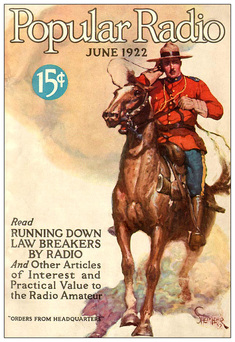 Woo hoo! After the prime score of the Dick Powell Mountie film Mrs. Mike on DVD, then to find the charming radio version from the amazing Lux Radio Theatre (which you can get on my other post HERE), I really thought that, beside reading the 1947 book (which is on my shelf, waiting to be read), I'd had a pretty good fleshing-out of the story. I was wrong! I stumbled on a nice version of the Screen Director's Playhouse version of the story, with a fun surprise! The announcer lets us know, right at the beginning, that "Illness has prevented the appearance of Dick Powell and June Allyson as previously announced". The replacements? Joseph Cotten and the stunningly radiant Evelyn Keyes! Not that Cotton is preferable to Powell by any means, but he's an awesomely different take on the character, and on top of that, I'll take Keyes over June Allyson 100 times out of 100! The little picture below says it all... Download this brilliant episode HERE PS: I'll review the film version Mrs. Mike for the O CANADA Blogathon soon, and it'll be posted here and my film page!
 Arnold Friberg was an American painter and illustrator with an amazing eye. Though in a similar style to Norman Rockwell's, his material had it's own flavour; his images are gripping and full of character. He's best known for four things: his amazing painting of George Washington praying at Valley Forge (bottom left), the pre-production promo paintings for THE TEN COMMANDMENTS (bottom center), colourful depictions of scenes from the Book of Mormon (Friberg was raised a Mormon), and finally, he painted some of the greatest Canadian Mountie art ever produced. His stuff sits squarely in the center of the Mountie ideal; honest, strong, brave and capable, and each is chock-a-block full of stalwart goings-on and derring-do. As a fan of the Mountie image, I'm really inspired by this stuff. That's why this kind of heroic image exists; in the face of an irregular and occasionally disappointing reality, they serve to remind us of what could be possible with some effort. Friberg really had the touch for this kind of thing. (click image to enlarge, then use the arrow keys ← → to change images )
 Apparently the Monopoly game has an updated version, aptly (if a bit obviously) titled, "Monopoly, Here and Now". I've never played the game, and to be honest, I probably never will...apart from Chess and Nine Men's Morris, I'm not much of a game guy. Well, they have a "world" edition, and in a stunning bit of tiny pewter magnificence, they have a shiny-yet-stalwart Canadian Mountie! Iconic. I hate the damned term, but it actually suits our fave red coated law enforcers! I got this beauty from Ebay (thank God for Ebay), and it would take a bit for me to be more thrilled. I am tempted to buy a small Squadron of these silvery troopers! 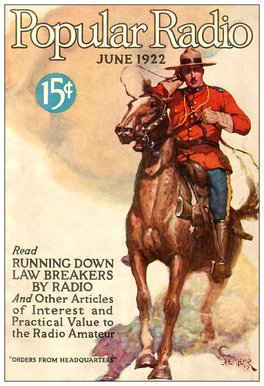 Woo hoo! After looking for a good while, I found both the DVD and the Lux Radio Theatre version of the Mountie film MRS. MIKE, and BOTH starring the amazing tough guy crooner Dick Powell! I really love the Lux Radio broadcasts; they capture nuances of the story that are different from the films, and added with the studio audience reactions, I feel like my film experience has been embellished. the actors tend to have a bit more fun with the lines when on a studio stage, and I always get caught up in the live vibe. So cool. When I wrote elsewhere about my search for the film, I wrote this little descriptive blurb; here I plagarise myself for the sake of info: Based on the novel Mrs. Mike, the Story of Katherine Mary Flannigan, written by Benedict and Nancy Freedman, it details the (supposed) actual events in the life of a woman married to a Canadian Mountie in the earliest bit of the 20th century. It's a tale of love and hardship in all of it's incarnations, though many of the details have been changed for dramatic effect. When asked about the novel, the Mounties involved in the "real life" story proclaimed it to be quite fictional. You can download this GREAT Mountie drama HERE
 One thing that should be known about me is that I'm a fan of Mountie stuff. Radio dramas, lobby cards, buttons, knick-knacks, swag and other Mountie-related nonsense bring the smile of a well-satisfied geek. Well, Mountie movies are very much on that list. I own at least forty in various formats, and I haven't seen a bad one yet! Well, it was relatively recently made known to me that there are Euro/Spaghetti Mountie westerns, and I LOVED the idea! I grew up with Sword and Sandal pictures, and in the last half-decade I've developed a taste for both Spaghetti Westerns and the Poliziotteschi cop movies, so adding Mounties to the mix was an exciting prospect. I now have a good pile of them! I was able to find a source with every Euro-Mountie film that my research has been able to discover. One of these is the Italian/Spanish production, Kitosh, The Man from the North, originally titled Frontera al Sur (Frontier of the South), filmed in Spain in 1967. Though it was apparently filmed in Spanish, I've only seen a dubbed version. It's as well-dubbed as any of these films, and although this particular copy is an occasionally brutal pan-and-scan, it's highly watchable. Any port in a storm, wot? I've yet to see a DVD release of it, and many Euro-western fans don't even know it exists! It stars George Hilton as the rakish tracker/woodsman/gunfighter David Kitosch. This seems to be a name very much in line with traditional Spaghetti naming conventions; the Italians in particular have a unique perspective on the American west, and they tend to pick some really odd, but macho-ish-ly cool names for their gunslingers. Kitosch fits right in with some of the many odd names in the genre, particularly the famous ones: Manaja, Keoma, Sabata, Sartana, and the most famous of them all, Django (the gunfighter, not the guitarist). Names in general are certainly a big part of the magic of a western character, and the Italians know it very well; so much so, in fact, that the baddest of the gunfighters is a man with no name! It's an interesting and effective convention...it sets our guy apart from the crowd, and imbues him with strangeness, and it ties him to the various qualities of the cowboy hero/anti-hero archetype. Typical of the Euro-western, Kitosch is very much in the anti-hero camp. Between the debauching of beautiful women and running from hostile Aboriginal Canadians (traditionally referred to as "indians"), he works with the Royal Canadian Mounted police as a scout. To let us know from the beginning what kind of guy our character is, Kitosh, The Man from the North begins with a kiss; Kitosch smooches the wife of White Wolf, a local native chief, and immediately we're on the run! In wide-eyed haste, he horses-up and makes tracks for the fort of the local Mountie contingent, with the afore-mentioned indians on his tail. From then on the plot goes a bit cosmic and stream-of-consciousness-ish. Kitosch is asked to travel with the Mounties to protect a shipment of gold from a large band of outlaws, which he declines, and then there is a carriage full of beautiful women (each of whom seem to have a different emotional issue), who seem to have not much of a raison d'être (other than being both A) beautiful, and B) women), and, of course, there is the mysterious Mountie Major Baker, played by Pierro Lulli, the uncrowned king of the Peplum/Sword and Sandal film. He is Kitosh's foil throughout the story, fighting for the upper hand over him (in fact, impersonated by Kitosch for much of the picture, much to his chagrin). Throw in gunfights (fights in general, actually...diverse and plentiful), piles of gold bars, Mountie action, a Christian indian named Joseph, and more unpredictable plot turns than three Republic serials, and you have this film in a nutshell. It's all very surreal. Surreal, and EXTREMELY enjoyable. It took me a few minutes to grab a hold of the flow of the thing, but once I got the interior logic (or whatever term you would use to describe the interior flow of this swirling mass of themes and storyline), it was quite an amazing ride. I was excited when I heard that Hilton was in this one. I'm a big fan of the Franco Nero Spaghetti Western masterpiece Massacre Time, filmed the year before Kitosch (and reviewed by me HERE), and Hilton was awesome in a supporting role as Nero's character's brother. He has such a strange vibe; one part chaotic clown, a couple parts daring hero, and a dash or two of emotionally volatile killer. Though he often plays a role with humour, it is very seldom (in my view) that it's ever really that funny. He has an anti-hero's edge that cuts, even when he's making what is obviously meant to be humorous. His characters are the types of fellow upon which the good side is best to be, and I suspect it may have been the same for the man himself.  Actually, 1967 was quite a year for George Hilton. Typical of European actors of the time, the was in at least eight movies that year, including the one immediately following Kitosch, the Man From the North, Il Tempo Degli Avvoltoi ("The Time of the Vultures" in English, released as "Last of the Bad Men"), in which he also plays a Kitosch character. I say "a" as opposed to "the", because I'm not certain they are, in fact, the same character, in spite of the proximity of the two films. That's the beauty of the "Spaghetti". The logic and reasoning issues that so often destroy American low-budget movies don't apply; in fact, as Kitosch proves, the less attached you are to the normal strictures of life, the more ecstatic your watching experience will be. I suggest that you get out your tin-foil Mountie hat and put Kitosch in the DVD player...it's awesome.
|
Below is my list of Mountie movies and serials! They span from 1914 to modern times, and cover ever style and format; silent, talkie, b&w, colour, film, videotape, & DVD! Enjoy!
Mountie Links
RCMP Heritage ctr.
RCMP Heritage ctr. FB Nat. RCMP Mountie Gift Shop Northwest Mounted MOUNTIE GRAVES Mountie Graves blog R.C.M.P. trunks & Urns R.C.M.P. Vets Vets Canteen Gifts Mountie Shop Mounted Police Art The List
All
|
||||||||||||||||||||||||||||||||||||||||||||||||||||








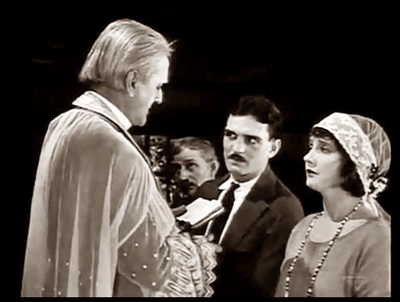









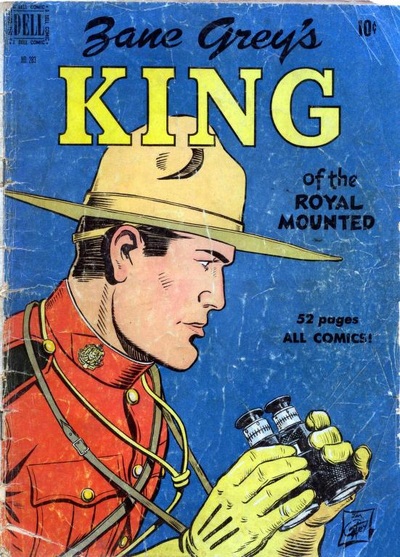



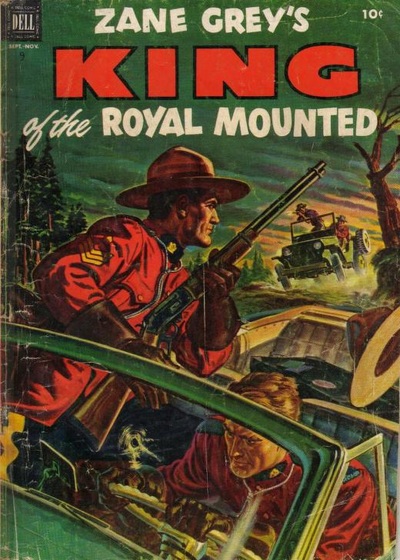
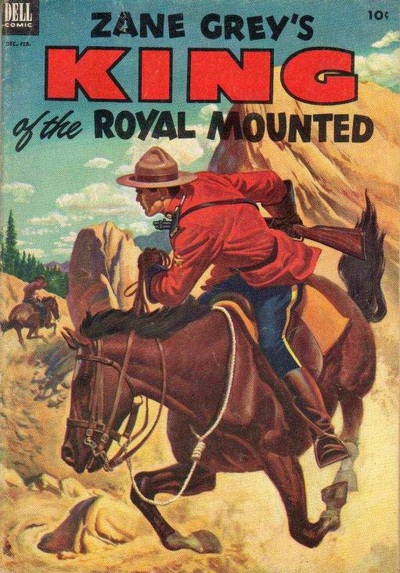





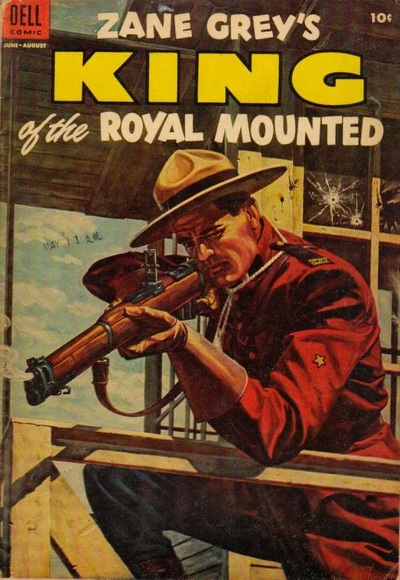








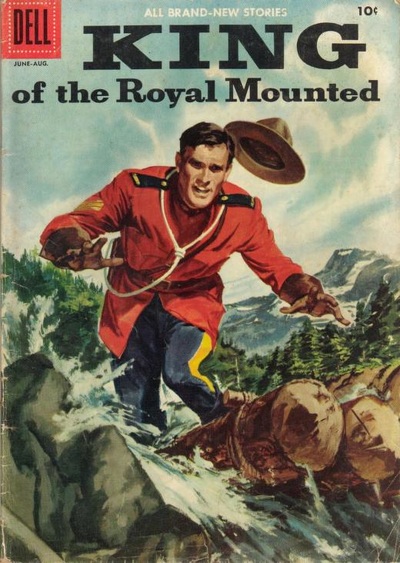
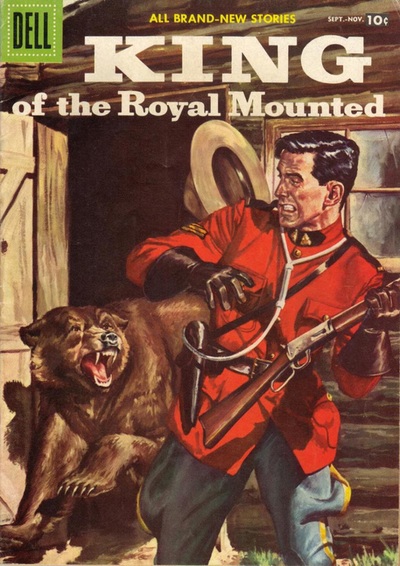



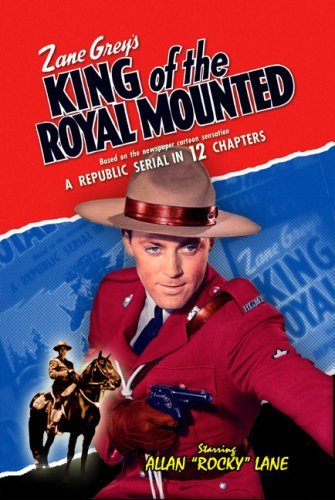



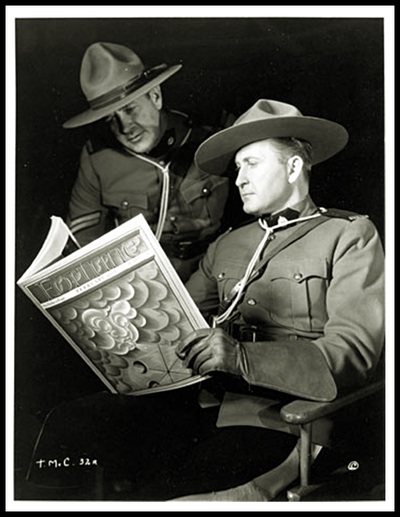






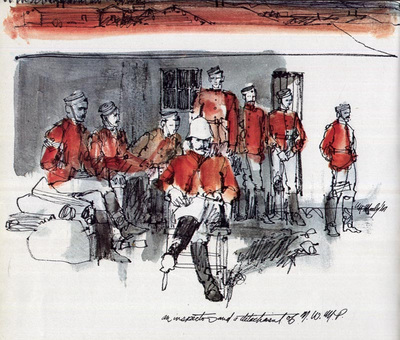


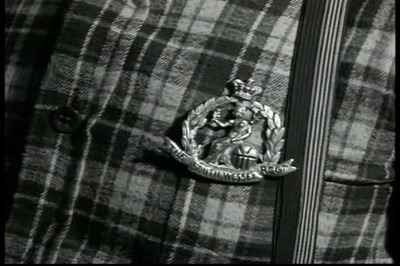



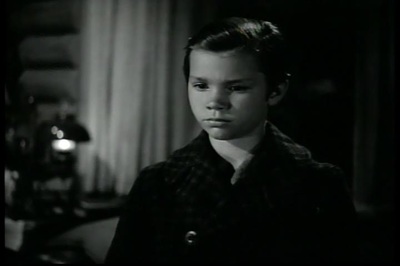





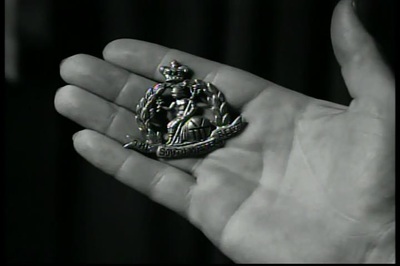






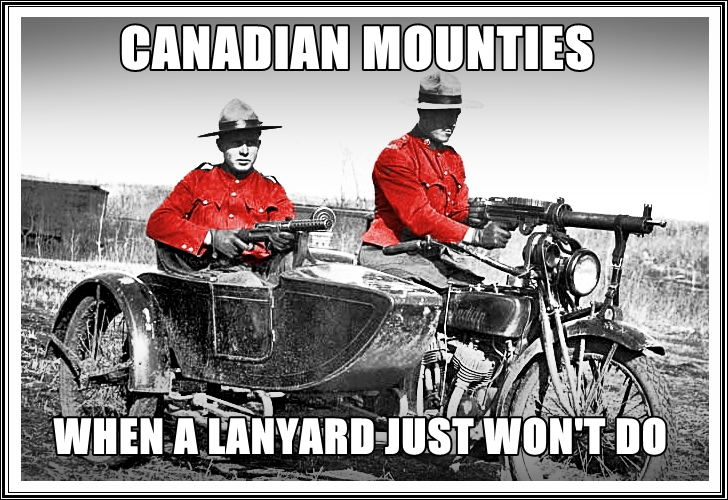
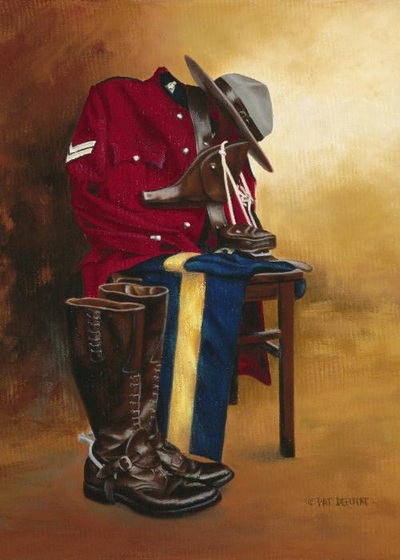












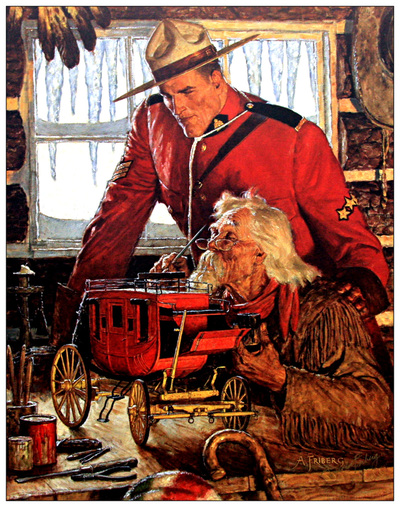













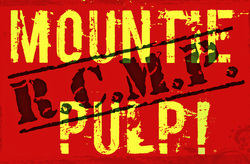

 RSS Feed
RSS Feed


